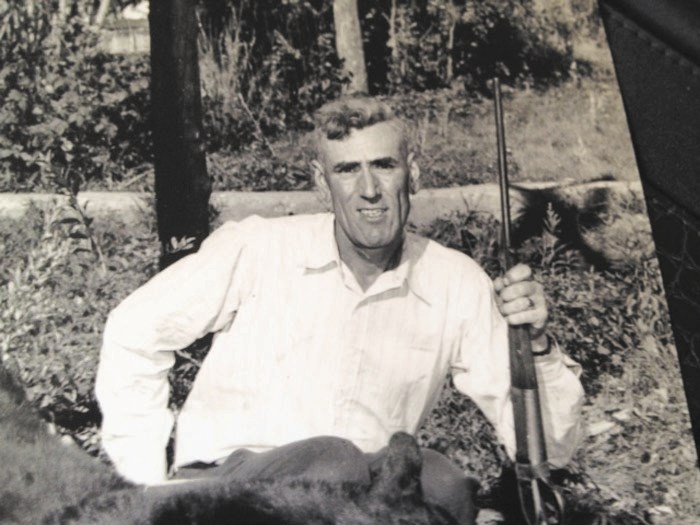Through the passage of time, new inventions and research has lead to discoveries that has helped form Cochrane’s history.
David (Dave) Copithorne, along with his wife, Miriam, and son, Neil, gives us insight through their own family history on how and when ranching and farming operations began to change.
“My grandfather Richard Copithorne came from County Cork, Ireland, homesteading land west of Cochrane in 1887,” Dave explained. “His brother, John, had already arrived in 1883 and his other brother, Sam, came in 1904. That is how the present 21 branches of the Copithorne family in the Cochrane area began. Richard married my grandmother, Sophia Wills, from Springbank, and they had six children; my father George was the third born.”
George (Dave’s father) left home at the age of 16 to work for Clem Gardner of Pirmez Creek, Alta.
In 1925, George started buying his own land west of the Shell Jumping Pound Gas Plant, bordering on the Stoney First Nation. By 1950 his land holdings had increased to 5,300 acres. George got along well with the Stoney First Nation people, going into partnership with Sam Blood in the ownership of a Texaco service station and garage located at Scott Lake.
George married Gertrude Flummerfelt from Calgary in 1939, a former teacher at Jumping Pound School. They had two sons and two daughters: Lawrence, David, Mary and Patsy.
David was raised on his father’s property and has lived there all his life. He attended Jumping Pound School for the first seven years, which meant riding his horse seven miles to school. He would stay with his uncle, Harry Copithorne, during the week, and then ride his horse home on Fridays after school. When the municipal district finally built a road in 1956, Dave was able to take the school bus to Cochrane. He later attended Olds School of Agriculture for two years, followed by some extra courses at Mount Royal College in Calgary.
His father, George, died when Dave was only 16 years old, so it was quite an undertaking for a young man to manage such a sizable ranch.
Dave and Miriam Bulman were married in Calgary July 2, 1966, after meeting each other on a blind date. Her parents, John and Jean Bulman, moved to Calgary from Charlottetown, P.E.I. in 1953 when she was six years old. Her father had a banking career, spending years with the Bank of Montreal in Calgary.
Miriam worked hard as a rancher’s wife and even learned to operate a rake. At the age of 19, she didn’t mind cooking for a crew of five men every day, but did not like washing all those dishes by hand.
Miriam recalled, “I wanted a dishwasher for Christmas, but I got a sewing machine instead, however, I did get the dishwasher eventually.”
They often hired First Nations people to help out. Dave reflected back when he said, “It was a great time in the ‘50s. The First Nation people put up hay beside us on the reserve. You could hear them singing at night in their teepees and tents. They were hard workers and we used to hire them for haying and feeding cattle. We bought hay and fence posts from them.”
Dave and Miriam had two children, Debbie and Neil. Debbie is living in Campbell River and has five children.
Neil attended Cochrane schools and Olds College, taking agricultural lending and majoring in finance. He also took flying lessons to achieve his commercial pilot’s licence. Neil had a big decision to make – pursue a pilot’s career or help dad manage the ranch.
Much to his father’s delight, he chose to stay at the ranch, becoming a partner with Dave. Neil spoke openly when he said, “The opportunity was there. Not everyone has the money to run a ranch. I’m an entrepreneur, like having my freedom and enjoy being outside.”
“After division of the land in the family, Designer Gene Cattle Co. Inc. is 3,000 acres in size, including rented and leased land,” explained Neil. “We have a 250 cow/calf operation and raise our own bulls.”
Dave had attended a Roy Berg day on crossbreeding Angus, Hereford and Saler cattle in 1968 and started following the program in 1969. In the 1993-94 season, they put their cattle in the Cattleland Feedyard Test Station, placing first in ‘Feed Conversion’ at a rate of 5.85, and third for ‘Rate of Gain’ with a rate of 3.50. This is a rating system used in beef industry genetics. Designer Gene was clearly proven to be among the Top 21 producers.
“As far as changes go, all farming operations used to be done with horses,” Dave said. “I bought an international tractor in 1951 and a baler in 1956. In 1967, I went to loose hay, a 24-foot rake and a 10-ton stack mover. We went to round bales in 1977.
“However, the biggest change in the industry that I have seen is the study of genetics and cross-breeding.”
Years of success have proven that this produces the ultimate cattle.




